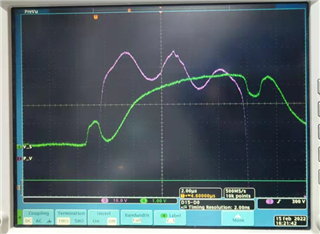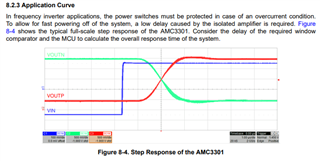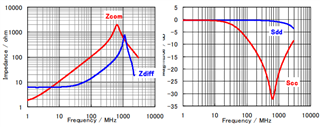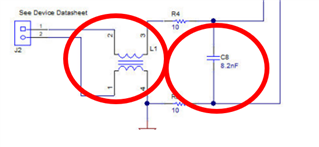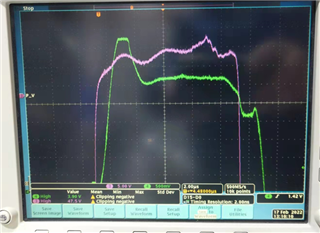Other Parts Discussed in Thread: AMC3301, AMC3336
Hi Team,
I ordered AMC3301EVM from digikey, looks there is some difference with the spec on TI website, for example the schematic's input side cap is C12, but on the board looks C8.
Could you let me know is the board newer or spec is newer, and how can I find the User’s Guide of the one I ordered?
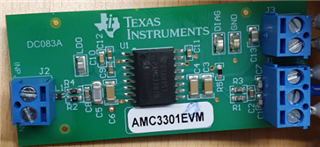
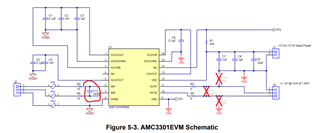
On the other hand, I have measured the output of AMC3301, as the following picture, purple is the primary voltage(390VDC, 10us pulse) I want to detect, green is output of AMC3301EVM.
the EVM output rise time is too long and didn't following input's change. I guess maybe because of the evm's input filter, could you advice how to improve it to fit my application, thanks in advacne.
